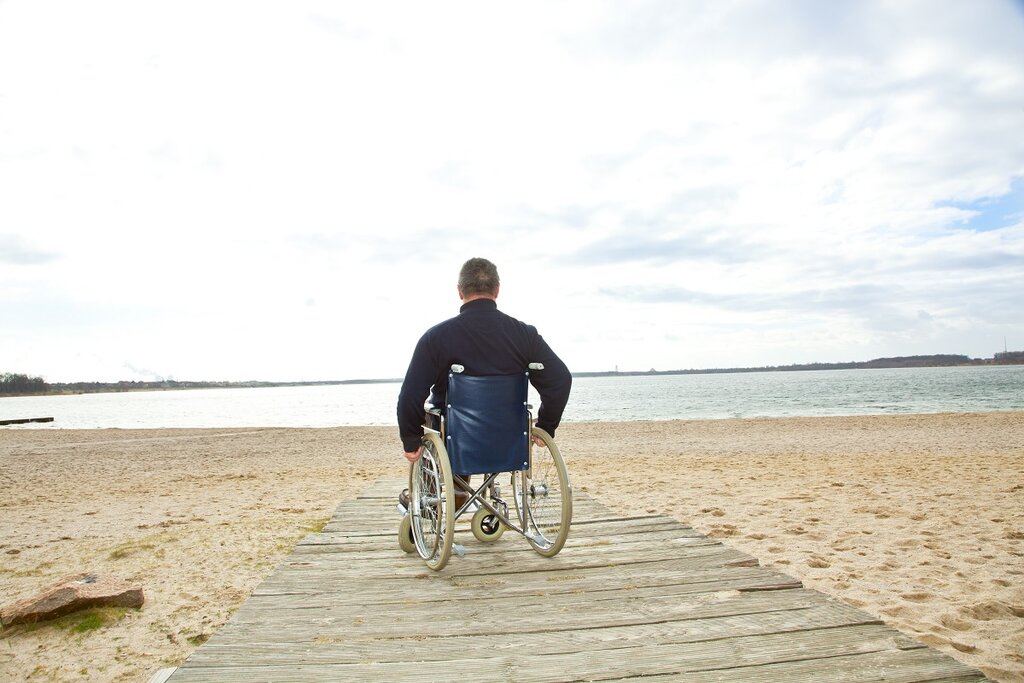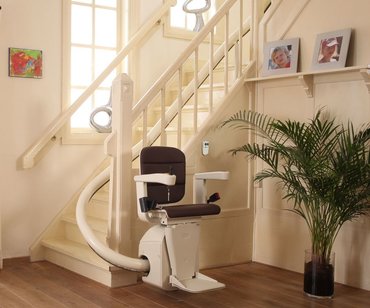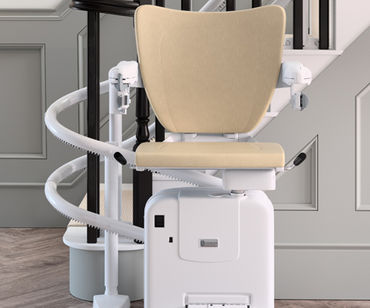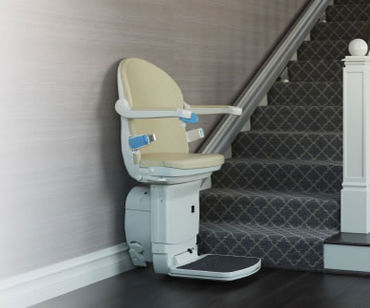How to have an accessible beach break

When the weather is warm and sunny, many of us feel a burning desire to make the most of it. With so many gorgeous beaches and hidden coves in the UK, there is nowhere better to enjoy the beach than right here at home. For those with limited mobility, however, it can sometimes be a challenge to find a wheelchair accessible beach or destination that is suitable for your needs. Whether you’re looking for a day trip closer to home or are planning a few days away at the seaside, read our guide for some tips and recommendations.
Choose the right location
Although a spontaneous trip to the beach can be exciting, for those with limited mobility, you may need to plan your itinerary for the day. There are some great locations across the country for you to visit, but you must check how accessible they are before arriving to avoid disappointment.
Not all beaches are made equal, and while some have the newest mobility-related modifications, such as accessible beach huts, others are sadly lacking. Many beaches have now got access to beach wheelchairs. These all-terrain wheelchairs can take you smoothly to the sea without the snags and manual effort of a typical road wheelchair.
For those who use stair lifts at home, consulting websites such as Euan’s Guide can provide you with extra information, such as if there is a boardwalk, step-free access, a ramp for wheelchairs or accessible toilets nearby. Also, pages such as the Beach Guide have useful top-line information to help you narrow down your search for a wheelchair-accessible beach.
We spoke to Amie from i-escape, who shared this with us: “Accessibility is a key consideration when visiting the beach. Are there steep steps down to the beach? Is there a long walk from the car park? Is the beach sandy, shingle or rocky? It’s also vital to consider tide times – some beaches are completely inaccessible at high tide, so check beforehand. Additionally, consider the time of year you are visiting. If you’re counting on using amenities such as toilets, cafes or lifeguards, these may only be available during high season, particularly in the UK.”
READ ALSO: Top tips for the perfect summer holiday
Find accessible beach activities
There are a few fun beach activities for those with limited mobility that can help mix things up from reading and sunbathing, such as surfing. Surfability is based in South Wales and offers surfing lessons for those with disabilities. We spoke to Benjamin Clifford about what this surf school can offer:
“At Surfability UK, we are very passionate about making the beach accessible for disabled people and for disabled people to experience the ocean and surfing. Most of our surfing sessions are run from Caswell Bay on the Gower Peninsula near Swansea.
“Caswell is a very accessible beach; it has good facilities with lots of disabled parking bays, an accessible toilet and ramp access to the beach. Swansea Council also has beach wheelchairs which can be borrowed. There is a cafe and takeaway on a flat promenade above the beach. Many hotels in nearby Swansea have wheelchair-friendly rooms, and there is a fully accessible holiday home based on the Gower called Bramwood."
Top wheelchair accessible beaches in the UK

With over 10,000 miles of coastline, many options are available for finding an accessible beach. Here are three great accessible beaches to try.
Skegness, Lincolnshire
Skegness Beach is a great place to escape to. Not only are there a variety of accessible holiday parks in the area, but the beach-friendly wheelchairs make heading to the water easy. The wheelchairs require a £20 refundable deposit, with two on offer at Skegness Beach. The extra-large wheels make travelling on the uneven beach surface easy, and, thanks to their height, they are also equipped to be used in the sea.
Bournemouth, Dorset
Boscombe Pier in Bournemouth is an ideal location for wheelchair users. Not only does the town have its own microclimate providing warm waters for its visitors, but its innovative beach huts are large enough to fit up to four wheelchairs, with the option of joining two huts together for larger groups. These beach huts are the first of their kind in the UK and feature a fully accessible toilet, shower, and charging station for electric scooters.
Once out of the beach huts, you can access the beach from the cliff top using the accessible lift or board a land train from Alum Chine to Boscombe Chine Gardens. Beach wheelchairs, free disabled parking, accessible toilets and Changing Places are also nearby.
Broughty Ferry Beach, Dundee
With close parking and Changing Places facilities, this Dundee beach is excellent for those with limited mobility. There are tarmacked walkways which means that you can enjoy the views out over the calming water without having to navigate the sand, or, for those who want to enjoy the sunshine on the shore, there are ramps providing easy access.
Other wheelchair-accessible beaches in the UK
- North Berwick Beach, Scotland
- Summerleaze Beach, Cornwall
- Great Yarmouth Beach, Norfolk
- Swansea Bay Beach, Wales
- Benone Strand, Northern Ireland
- Brighton Beach, Sussex
- Skegness Beach, Lincolnshire
- Paignton Sands, Devon
READ ALSO: UK attractions: Tips and recommendations for disabled visitors
Plan your journey
When choosing which beach destination to visit, carefully consider how you will get there. For those planning a multi-day break, consider the accessibility of your preferred method of transport.
If you are just visiting the seaside for a day, research online to see if there is somewhere to park close by. You may not wish to travel long distances from the car park or train station before you reach the beach, especially if you bring windbreakers, picnics and other paraphernalia to enjoy your day.
Your journey from the town to its beach is also worth considering, as not all towns make it easy to access their beaches. Find out before you arrive if your beach of choice is lower than the town, as often the beach is a few tantalising metres below the town itself. If there is a ramp, lift or road to reach the beach, then this isn’t a problem; however, if there are only Victorian-style steps, you might have to consider a different location.
Find good accommodation
Are you staying overnight for an extended beach holiday? The proximity and facilities of your accommodation are critical to the success of your trip. If you want to be near the action, staying in a seaside town is a good idea. Immediate access to the beach increases the hours you can spend on it. It also reduces the amount of travelling you have to do to dine out or enjoy other activities.
Ensuring accommodation has the correct facilities can be difficult. While some companies, such as Airbnb, list a property as accessible, they often do not specify what that means. It’s always worth calling your intended accommodation before you book to double-check they have the necessary facilities.
There are designated disabled travel sites that help those with limited mobility. Disabled Holidays is a company that offers holidays both in the UK and abroad and ensure that your accommodation fulfils your requirements.
Pack the right items

Before heading to the beach, ensure you’ve packed everything you need. However, it is easy to overpack, and this can lead to discomfort when carrying these bags across the sand for the day, so make sure you don’t take things you don’t need.
If you’ve arranged a day trip and are travelling by car, you can always pack a bag in the boot of things that you’ll potentially need, such as a change of clothes or an extra towel, but if you’re away for longer or catching a train, you will need to pack carefully. This is when a packing list can come in handy, giving you a reference list to check off.
You can pack for your day at the beach in many different ways. If you’re planning on swimming, you must bring the appropriate clothing and something to dry off with. Similarly, you may wish to bring a picnic with you to keep costs down and to ensure that everyone has something to eat that they like. Although this is a good option, especially if you’re visiting with fussy eaters such as grandchildren, this will add an extra bag you’ll need to carry around with you, so keep this in mind.
Amie from i-escape recommends: “It’s wise to be prepared for all weather when heading to the beach, whether you’re holidaying in the UK or heading long-haul. An umbrella and windbreak allow you to seek shelter when it’s too hot, if the wind picks up or during a rain shower. On sunny days pack sunblock, a hat and plenty of water to prevent dehydration. And if reaching the beach requires a walk, sensible footwear is always a good idea.”
READ ALSO: The accessibility of every UK theme park
Packing list for a day at the beach
- Suncream
- Towels
- Snacks
- Water bottle
- Swimming costume or shorts
- Sunglasses
- Hat
- Jumper or warm layer
- Money
- Mobile phone
- Book
- Beach tent
- Beach chairs
We hope this guide will be helpful in helping you plan a trip to the beach. There are several considerations, but with preparation, you can enjoy an amazing and accessible beach break.
For more tips, guides, and advice, visit our news page.



